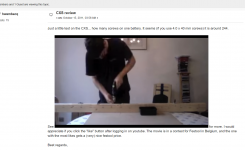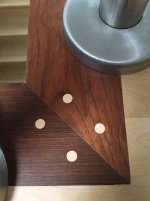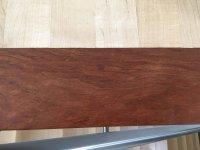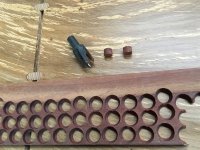[welcome] to the FOG.
The CSX will work fine, but it will grind down the batteries in a hurry, so follow Michael's solution. [big grin]
However, I'm with Peter_C on this one, I'd just use a Bostitch flooring stapler unless you have a VERY small area to deal with. This is what the Bostitch was designed to do. It drives large staples through the tongue of the strip flooring which allows each leg of the staple to find its own path. Thus sometimes the legs of the staple go down, sometimes they go up and sometimes one goes up and the other goes down. This just increases the holding strength of the fastener.
Also, because the staples are driven at a 45º angle, when the stapler is struck with a mallet, it pushes the entire piece of strip flooring closer to the part that's already fastened to the floor, thus eliminating or minimizing any gaps. There have been times where I would have a 1/8" gap between boards when they were warped and when driven VERY VERY HARD with a mallet, the strip flooring would nicely butt up against the existing strip.
Another consideration, is driving flat head screws into soft wood tongues is different than hardwood tongues. In softwood, they burrow themselves into the wood. In hardwood, oak/maple, they may break off the tongue or even crack it and move it forward. At that point, when you butt up another flooring strip to it, the tongue has been physically moved too far and it will not allow a nice tight fit with the next piece of wood. There will be a gap and there is no way to solve it unless you attack the male profile with a hand plane or the female profile with a router. Make it easy on yourself. [big grin]




